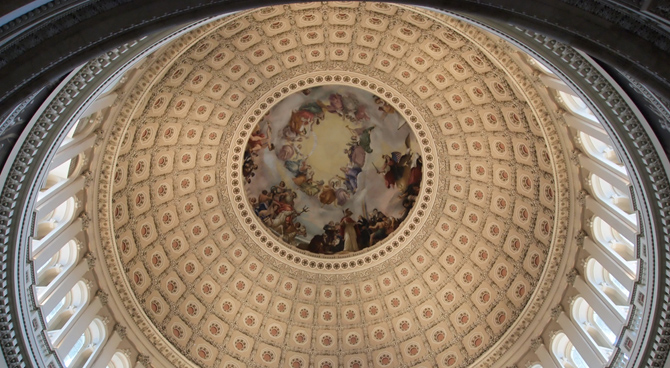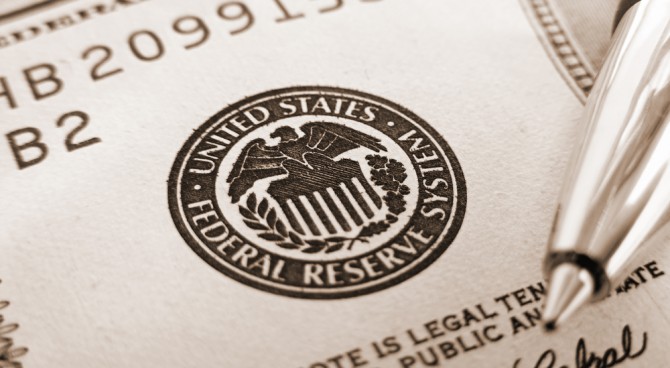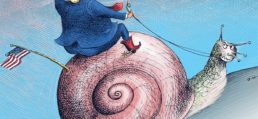Tariff tensions promote economic uncertainty, which in turn inhibits business investment.
By Phil Gramm and Mike Solon
May 9, 2018 6:38 pm ET
Economic uncertainty and prosperity are sworn enemies—when uncertainty reigns, prosperity fades. Uncertainty undermines prosperity by sapping investor and consumer confidence, choking off private investment, and suppressing consumer spending. The depression that followed the 1929 crash and the recession that followed the 2008 financial crisis are called “great” not only because of the magnitude of the downturns, but also because the economic uncertainty that followed produced the weakest recoveries of the past century. Today, the Trump administration’s trade policies have increased economic uncertainty to a level that threatens to bring back the stagnation of the Obama years.
Eight stagnant years after the 1929 downturn, the great American manufacturer Lammot du Pont II identified the cause. “Uncertainty rules the tax situation, the labor situation, the monetary situation,” he said, along with “practically every legal condition under which industry must operate.”
This evaluation was borne out by a 2016 study published in the Quarterly Journal of Economics, which found that economic uncertainty peaked in the 1930s. As government increasingly dominated the economy in an effort to control prices and wages, the American recovery lagged behind every other developed country except France. In its 1938 yearbook, the League of Nations implicated policy uncertainty as the cause of U.S. stagnation: “Uneasiness accentuated the unwillingness of private enterprise to embark on further projects of capital expenditure which might have helped to sustain the economy.”
The second-highest level of economic uncertainty since 1900 occurred during the 2008 subprime crisis and the subsequent failed recovery. When the recession ended in mid-2009, the Obama administration predicted six years of 3.9% average real growth—a reasonable expectation, since strong recoveries had followed every previous significant postwar recession.
But as President Obama expanded government control over the American economy—through laws like Dodd-Frank and the Affordable Care Act, regulations, executive orders and agency guidance—a tidal wave of red tape spread across health care, financial services, energy, manufacturing and even the internet. With the rule of law replaced by regulatory decisions, vast sectors of the economy lost a predictable business environment and economic uncertainty soared.
Investment atrophied as private fixed investment fell to just over a third of its historical norm for the postwar era. With the investment drought, productivity and wage growth plummeted. Uncertainty kept the economy in a stupor, holding average economic growth during the recovery to a mere 2.1%—barely half the level projected at the start of the recovery.
In America’s most dramatic deregulatory effort, the Trump administration and Congress have repealed, revised or stopped more than 1,000 regulations, reversing much of the political uncertainty produced by Mr. Obama’s onslaught. The economy quickly revived, averaging 3.1% real growth in the first three quarters of the Trump presidency—almost 50% higher than the average under Mr. Obama.
Congress and the president further strengthened the recovery by enacting tax reform, which has spurred additional business investment. But today the administration’s trade policy is beginning to create a level of uncertainty that could imperil the recovery.
The White House dismisses concerns about its trade actions, claiming aggregate tariffs are too small to do much harm. In reality, it is virtually impossible to calculate even the primary effects the Trump trade policies will produce as they ripple through the economy. The subsequent effects that would come from escalating retaliation are unknowable. Mr. Trump’s threats to terminate the North American Free Trade Agreement create massive uncertainty by jeopardizing the North American export chain.
No one knows which U.S. exports retaliating nations might penalize, so the stifling effects of uncertainty permeate a broad cross-section of the economy. For commodities already targeted for retaliation, the effects of uncertainty have begun to appear. How many soybean farmers are investing in farm equipment today? President Trump recognized that his trade policy is creating debilitating uncertainty overseas when he claimed that now “nobody’s going to build billion-dollar plants in Mexico.” But he fails to see that the same logic applies to Nafta-related investments in the U.S.
Uncertainty about trade policy lowers the value of trade-related plant and equipment in all three Nafta countries. Since U.S. investors own more than $90 billion of investments in Mexico and more than $350 billion of investments in Canada, the destruction of Nafta would wreak havoc on U.S. pension funds and other equity investments by destroying capital values in the U.S. and across North America.
The University of Michigan’s April consumer-sentiment survey noted that respondents who mentioned the tax cuts expressed high confidence in the economy, while those who mentioned tariffs expressed low confidence. The Institute for Supply Management recorded the largest drop in its manufacturing index since 2015, with more than a third of respondents citing tariffs as a source of their worries. Economists Scott Baker, Nicholas Bloom and Steven Davis —authors of the study that measured Depression-era uncertainty—have found that economic uncertainty related to trade this March was more than five times as great as the pre-election average for 2016.
The tariffs proposed by the White House may be the president’s real policy or bargaining chips in his negotiating strategy. In either case, the posturing needs to end and the policy making needs to begin. The uncertainty generated by the administration’s trade threats is beginning to corrode the recovery. If the final policy reduces trade barriers and export subsidies, America and the world will benefit. If the policy reduces trade, America and the world will lose, but at least the new landscape will be known. Uncertainty will be reduced and the economy will be able to find its way forward.
Mr. Gramm, a former chairman of the Senate Banking Committee, is a visiting scholar at the American Enterprise Institute. Mr. Solon is a partner of US Policy Metrics.
Appeared in the May 10, 2018, print edition.





